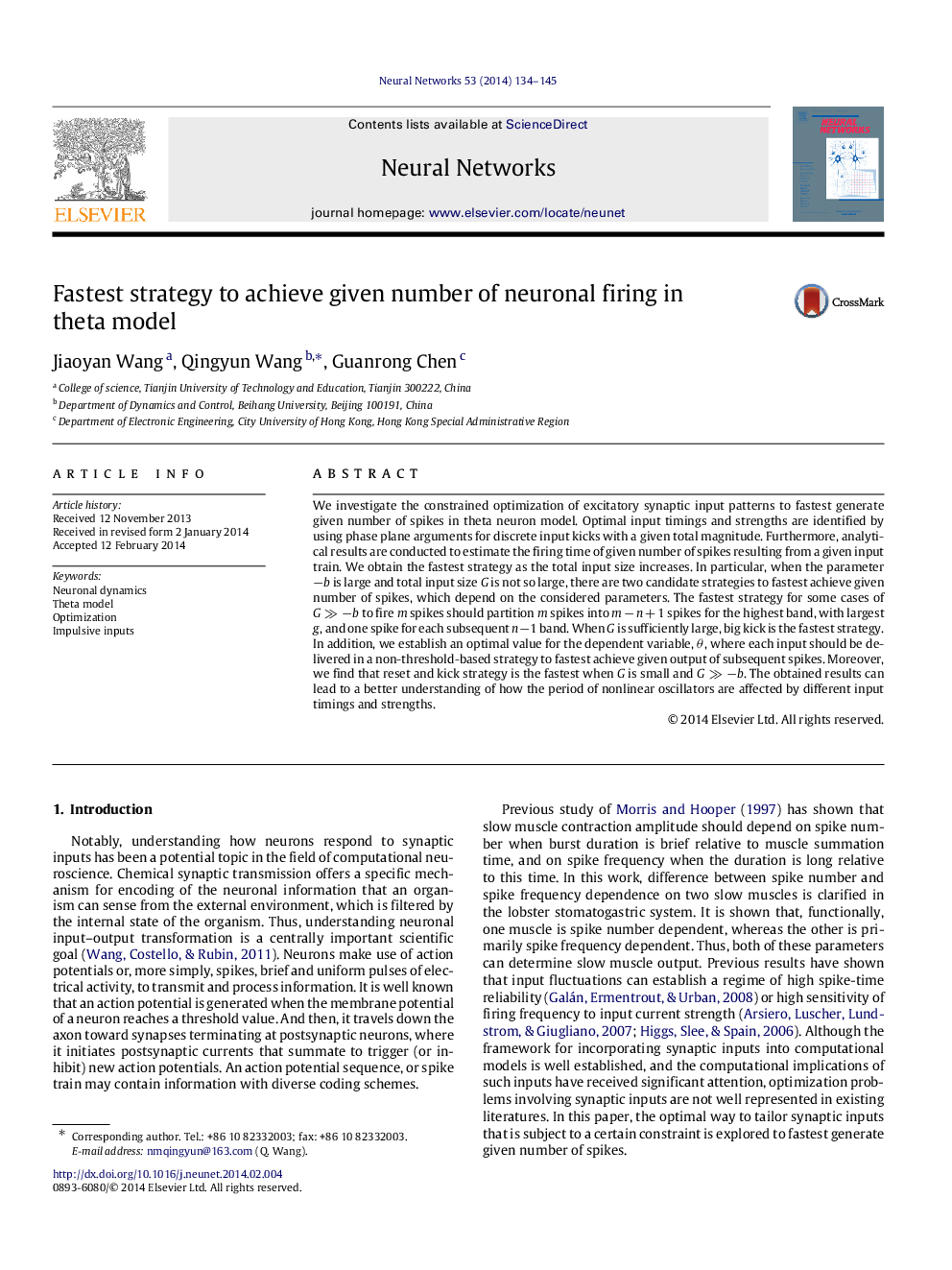| Article ID | Journal | Published Year | Pages | File Type |
|---|---|---|---|---|
| 406335 | Neural Networks | 2014 | 12 Pages |
We investigate the constrained optimization of excitatory synaptic input patterns to fastest generate given number of spikes in theta neuron model. Optimal input timings and strengths are identified by using phase plane arguments for discrete input kicks with a given total magnitude. Furthermore, analytical results are conducted to estimate the firing time of given number of spikes resulting from a given input train. We obtain the fastest strategy as the total input size increases. In particular, when the parameter −b−b is large and total input size GG is not so large, there are two candidate strategies to fastest achieve given number of spikes, which depend on the considered parameters. The fastest strategy for some cases of G≫−bG≫−b to fire mm spikes should partition mm spikes into m−n+1m−n+1 spikes for the highest band, with largest gg, and one spike for each subsequent n−1n−1 band. When GG is sufficiently large, big kick is the fastest strategy. In addition, we establish an optimal value for the dependent variable, θθ, where each input should be delivered in a non-threshold-based strategy to fastest achieve given output of subsequent spikes. Moreover, we find that reset and kick strategy is the fastest when GG is small and G≫−bG≫−b. The obtained results can lead to a better understanding of how the period of nonlinear oscillators are affected by different input timings and strengths.
